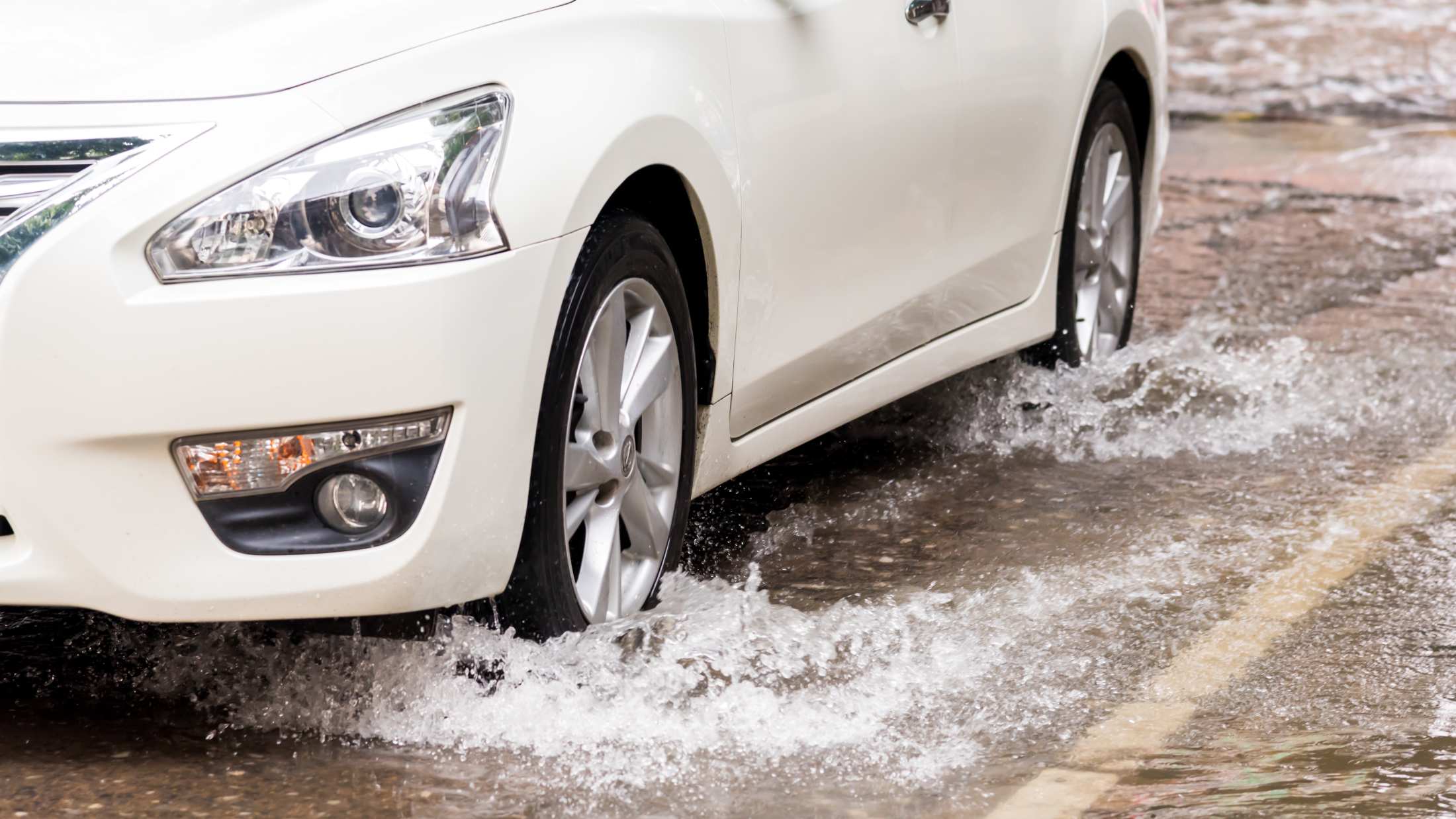The Met office are predicting another record-breaking year for soaring temperatures this year. So wherever your summer takes you, there’s a few things you’ll need to do to keep your cool as the temperature rises.
In this guide:
Before you set off
Pack the essentials
Hopefully you’ve already packed an emergency kit in your car. But as well as your torch, hi-vis jacket, and warning triangle, you might want to consider some summer essentials, too:
- Water – Pack some bottled water for you, your passengers, and your vehicle. If your car overheats, you might need to top up your coolant with water to get you where you need to go.
- Screen wash – When it’s hot, dry, and dusty, your windscreen might need cleaning a little more often. Bring extra screen wash, so you can refill on the go.
- Sunglasses – If it’s sunny, pack some sunglasses you can wear to protect your eyes. Just be aware of how tinted your sunglasses are. Sunglasses with 8% light transmission or less (known as ‘category 4’) aren’t recommended for driving. Usually, very dark sunglasses will come with a warning not to use them whilst driving.
- Suntan lotion – While you won't burn through your car windscreen, your skin can still get damaged by UVA rays which aren’t all filtered out by your windows. Choose a suntan lotion that offers both UVA and UVB protection to save your skin – and help you avoid a ‘trucker’s tan.’
Test your tyres
There’s a bigger risk of a blowout during hot weather, so you’ll need to deal with any signs of wear on your tyres.
High temperatures can make existing tyre damage much worse. Check for cuts, punctures, and bulges on the wall of your tyre before you set off on your journey.
To avoid a breakdown or blow out, make sure you check your car’s tyre pressures and tread depth before you drive. If your treads are below 2mm deep, it’s probably time to invest in new tyres. You’ll find the recommended tyre pressure for your car, in your car’s handbook.
Charge your air con
Not every car offers the luxury of air conditioning. But if you’re one of the lucky drivers with it, air con can help you keep your cool behind the wheel. Because air con reduces humidity, you may find the air feels dry when you have it on. Remember to stay hydrated, even if you’re in an icy cool car.
You’ll need to keep your air conditioning well serviced, and may need to get it ‘recharged’ with refrigerant gas from time to time. If you don’t, the gas can leak out and make your air con less effective.
Don’t forget, you’ll need to top up on fuel more regularly if you’re using your air conditioning. This is because air con is powered by your car’s engine (or battery if you’re driving an electric vehicle).
Travelling with pets?
You might need to consider whether you really need to take your pet in the car with you. Remember, your dog or cat will be wearing a fur coat that they can’t take off, so they’ll get hotter quicker than you will. They might be better off staying somewhere cool and calm.
If you do decide to pack your pet, you’ll need to make considerations for extra water, food, and shade - and decide on a plan for them if your car breaks down unexpectedly. Never leave your pet in an unattended car in hot weather.
Tips for travelling
Look out for lights
Keep an eye out for warning lights appearing on your dashboard and pull over in a safe spot if a red, orange, or yellow warning appears.
If your car’s temperature gauge climbs, or a temperature warning light appears, your car may be overheating. Pull over as soon as you can to let your engine cool, and check your car’s manual for tips on what to do next.
We’ve compiled some of the top causes of summer car breakdowns – and how to solve them – in a handy article. Why not give it a read before you set off on your summer holidays?
Not sure how long you’ll be stopping for? If in doubt, get everybody out
If you have to make a stop, invite your passengers out of the car with you. Don’t leave vulnerable adults, children, or pets in a parked car when it’s warm. The windscreen and windows in your car act like a greenhouse, and within a few short minutes, temperatures can reach unbearable levels.
Park like a pro
Leaving your car windows open invites in more than just a summer’s breeze
Thieves will target vehicles with opened windows, and your insurance won’t cover thefts that happen because you left your doors or windows open.
However tempting it may be, don’t leave your windows or sunroof open if you’re leaving your car unattended for any amount of time.
Stay safe in the shade
Not only will parking your car in the shade keep the insides cooler, it’ll help to protect your paint from fading, too.
Driving an electric vehicle? It’s unlikely your car will overheat in the sun – but parking in direct sunlight or in extreme heat for too long could affect the health of your battery. Try to park in the shade, if you can.
If there’s nowhere you can park in the shade, create your own using a sunshade. Putting a sunshade in your windscreen will reflect the sunlight away from your car – just remember to set it up shiny side out.
Electric cars and heatwaves
If you drive an electric vehicle, your battery likely won’t work as efficiently when it’s very hot out. You might find your range (or distance you can go in one charge) is shorter than normal. And when it’s time to charge, your battery will take longer to top up, too. Make sure you leave some extra time in case you need to stop and charge on your journey.
Our article, ‘What you need to know about common electric car breakdowns’ will give you more tips on what to do if your electric vehicle breaks down, or runs out of power.












